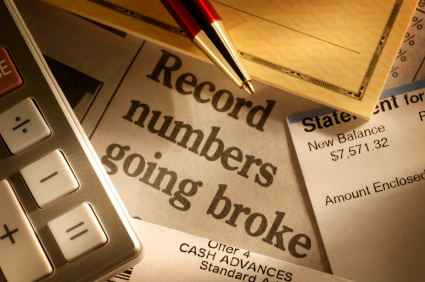
What it all means
Coming to terms with financial insolvency is emotionally draining for people and the stress can be overwhelming. Constant calls from creditors/collectors at home and even at work can cause sleepless nights. It can harm relationships and affect a person’s performance at work.
The final solution to insolvency, is to apply for protection under the federal Bankruptcy and Insolvency Act, either by filing a proposal or by making an assignment in bankruptcy.
What is a Proposal?
Under the Bankruptcy and Insolvency Act a trustee or an administrator files a Proposal, which is an arrangement between you and your creditors, to have you pay off only a portion of your debts, extend the time you have to pay off the debt, or to provide some combination of both. To be acceptable, your creditors must be better off financially under a Proposal than if you were to go bankrupt.
Retirement Savings Plan Loans
Money can be borrowed from your Registered Retirement Savings Plan without attracting tax to the withdrawal of funds if the funds are used to purchase your first home – the maximum withdrawal is $25,000 and must be repaid within 15 years even if the person files for bankruptcy. The writer does not recommend the withdrawal of RRSP funds for any reason other than retirement or a home purchase.
Consumer Proposals
A person is eligible if the total debts, excluding debts secured by a principal residence, do not exceed $250,000. The consumer proposals cannot be for more than five years. If the creditors do not accept the Proposal the debtor is not automatically bankrupt.
Insolvency counselling is required.
“Other Proposals”
There is no restriction on the amount of money a person owes. If the creditors do not accept the Proposal, the person is automatically bankrupt effective the date of the creditors meeting.
Insolvency counselling is not required.
What is Bankruptcy?
Bankruptcy is a legal proceeding that is available to a person to cope with a financial crisis. One of the main purposes of bankruptcy legislation is to afford the opportunity to people, who are hopelessly burdened with debt, to free themselves of the debt and start fresh with “a new financial lease” on life.
To go bankrupt it is necessary for a person to be insolvent. To be insolvent means to:
a) Owe at least $1000
b) Not be able to meet your debts, as they are due to be paid.
Will my creditors stop harassing me?
Yes, they will. By law, all actions against a bankrupt must cease once the documents are filed. This does not apply to secured creditors such as banks holding, for example, a lien on a car or a mortgage.
Who will know that I have gone bankrupt?
Any legal filing of a bankruptcy is a public document that the general public has access to. The credit bureaus – TransUnion and Equifax are notified and the bankruptcy will report on your credit bureau report for 6 years from the date of the discharge in the case of a 1st bankruptcy. For a second or subsequent bankruptcy, the information will report for 14 years on the Equifax Bureau and for the rest of your life with TransUnion. This however does not mean that credit cannot be obtained during this time…Read Rebuilding Your credit after Credit Problems.
How much am I allowed to keep?
For a list of property in your province that is exempt from seizure in a bankruptcy visit Bankruptcy Canada – #1 site on the Internet for bankruptcy information. If you are even considering a bankruptcy, I highly recommend you visit this site!
When is the bankruptcy over?
For those people who have not been bankrupt before, an automatic discharge can take place after 9 months if the creditors, Superintendent of Bankruptcy, or your Trustee have not opposed your discharge and you have received insolvency counselling.
The law allows for a formal process of declaring insolvency by filing either a consumer proposal or an assignment in bankruptcy. Declaring insolvency is a last resort for the overcomitted debtor because of the social stigma attached to this drastic measure and of the detrimental effect on the bankrupt’s credit rating. However, bankruptcy may be the only alternative for individuals or families that do not have enough income to cover their regular living expenses and also repay their debts in full.
Bankruptcy is a sad economic fact of Canadian life and for the most part financial insolvency is not about money, it is about circumstances in life. Just remember your credit rating is not a reflection of your personal worth, it is a credit industry tool.
" " indicates required fields
Disclaimer:
The information provided on this website does not, and is not intended to, constitute legal advice or an offer for services that can only be provided by a Licensed Insolvency Trustee. All information, content, and materials available on this site are for general informational purposes only. While we strive to provide accurate and up-to-date information, it may not always reflect the most current legal or other developments. Visitors to this website should not act upon the information provided without seeking professional legal or financial advice. This website may contain links to third-party websites for the convenience of the reader. Solutions Credit Counselling Service Inc. and its offices do not recommend or endorse the contents of these third-party sites, and we are not responsible for the accuracy or reliability of any information, opinions, advice, or statements made on these sites.
The information provided is general and educational information about the Consumer Proposal process.
Visitors are encouraged to consult with a qualified professional for advice tailored to their individual circumstances.






